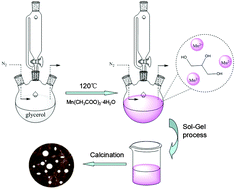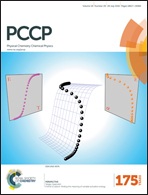MnO nanoparticles embedded in a carbon matrix as high performance lithium-ion battery anodes: preparation, microstructure and electrochemistry†
Abstract
Nano-sized MnO intimately embedded in a porous carbon matrix has been synthesized by a facile method in which the manganese-salts/glycerol sol was used as the precursor. The glycerol plays roles of the chelating agent, the carbon source and the solvent. The X-ray diffraction (XRD) and Raman results indicate that the carbon layer may have an obvious effect on the microstructure of MnO. The first-principles density functional theory (DFT) calculations further reveal a considerable charge transfer from MnO to the carbon, leading to a decrease of lattice parameters of MnO and the bond length of Mn–O in the MnO/C composite. The modified microstructure could improve electrochemical performance and meanwhile may explain the phenomenon of exceeding the theoretical capacity. The prepared MnO/C nanocomposite as an anode material displays superior Li-battery performance with a large reversible capacity, excellent cyclic performance and good rate capability.


 Please wait while we load your content...
Please wait while we load your content...